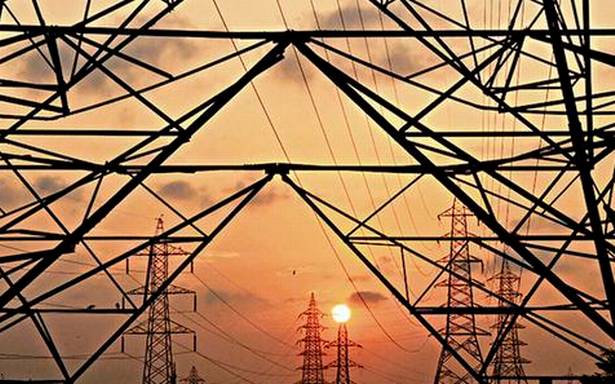[ad_1]
On December 16, the Central Electricity Regulatory Commission came out with a draft proposal to facilitate regulatory framework for General Network Access (GNA) which, if implemented, would bring in a radical change to the country’s power disbursal system and create a level playing field.
GNA means open access to the inter-State transmission system. Technically speaking, GNA is a non-discriminatory access to the inter-State transmission system for an estimated maximum injection and for a consumer to draw for a specified period. This is in keeping with the concept of “one nation, one grid”. This is expected to benefit the power generator and consumer, who now are dealing with challenges of transmission too.
If the concept becomes a reality, then it will untangle the current webs in the system and ensure that a generator focusses only on producing power and the consumer on buying it. How it will be transmitted will no longer be a restriction or a challenge.
For instance, today a power generator has to also work out how the supply will be done due to the point-to-point access concept which, according to the producers, is restrictive. GNA will allow them to supply from any point, as long as the quantum contracted for is met.
Eligibility criteria
The draft clearly defines the eligibility for GNA. According to the draft, the following entities shall be eligible as applicants for grant of GNA or for enhancement of the quantum of GNA:
(i) State Transmission Utility on behalf of distribution licencees connected to intra-State transmission system and other intra-State entities;
(ii) A buying entity connected to intra-State transmission system; Draft Central Electricity Regulatory Commission (Connectivity and General Network Access to the inter-State transmission System) Regulations, 2021;
(iii) A distribution licencee or a bulk consumer, seeking to connect to ISTS, directly, with a load of 50 MW and above;
(iv) Trading licencees engaged in cross-border trade of electricity in terms of the Cross Border Regulations;
(v) Transmission licencee connected to ISTS for drawal of auxiliary power.
Entities not cov,ered here, but as on the date of coming into force of these regulations, are connected to the inter-State Transmission or for whom Connectivity granted under Connectivity regulations has become effective, shall be eligible for applying for grant of GNA to the inter-State transmission system for the quantum equal to the quantum of connectivity.
“Conceptually GNA does away with pre-determined specific point-to-point access and allows access or drawal on the entire belt way, thus providing generators and procurers the choice of injection and drawal,“ Ashok Kumar Khurana Director General Association of Power Producers explained.
But will the concept work? What is the reason of replacing the existing regulations?
“Why not?” is the response one gets from power producers who have been asking for it for last five years, at least. What is the utility of ‘one nation one grid’ if power cannot be injected to reach anywhere without any hassle, the producers point out. GNA works like the GST (Goods and Services Tax) regime, thus doing away with unnecessary contracts between power producers and the bulk consumers for delivery of power.
To understand the reason for this proposed shift, one needs to read the two orders of CERC — March 2010 and February 2011 — that granted approval for 11 High Capacity Transmission corridors costing around ₹50,000 crore for evacuation of power of generation projects of Independent Power Producers.
According to reports, the projects progressed slowly due to delay in land acquisition, statutory clearance and fuel tie-up. Besides, due to certain technical issues in bidding process not many distribution companies had tied up their power requirement from these generating stations. There was no liability for payment of transmission charges associated with connectivity.
It is said that some of the producers were seeking long-term agreements for a quantum much less than their connectivity while using the existing transmission network to avoid the liability of paying monthly transmission charges which would be payable under such agreement. And inter-State Transmission Charges for these stranded lines have been shared by end-users who have little say in such capacity building. Besides, it is often found that the drawal requirement of many States is more than the allocated power.
The transmission system created to meet the drawal requirement of the States fulfils the needs of that particular State, however, the charges are shared by all the beneficiaries. Further, availability of National Grid facilitates transfer of power from available cheaper sources.
The rationale
Following these, the Central Electricity Authority initiated the idea of GNA for: (i) proper planning of transmission system and (ii) assured recovery of transmission charges from the applicant.
According to reports, States such as Punjab, Tamil Nadu, Haryana and Uttar Pradesh, who are availing themselves of far more import capacity t,hrough inter-State transmission than their long-term agreement capacity should proportionally share the point of connection charges at the point of drawal.
In the current scenario if short term/ medium/PX transactions are curtailed it results in significant bottling up of generation and distress to Discoms. While GNA is beneficial to the generator, how does it benefit bulk consumers? The answer is, a consumer is not worried about where the supply will come from and what energy source it will come from. The quantum contracted for will be transmitted to the consumer. In the power sector, the States play an important role. So will the States agree, since GNA will also result in tariff rationalisation to some extent and States which are making more money could see a drop in tariff rates?
Clearly, GNA is a much awaited change and the power generators have been waiting for it. Though it is still at a draft proposal stage, it is a case of better late than never. While the generators wait for it, it remains to be seen how the bulk consumers, namely the States, will respond to it. One hopes this policy does not just remain on paper.
[ad_2]
Source link








